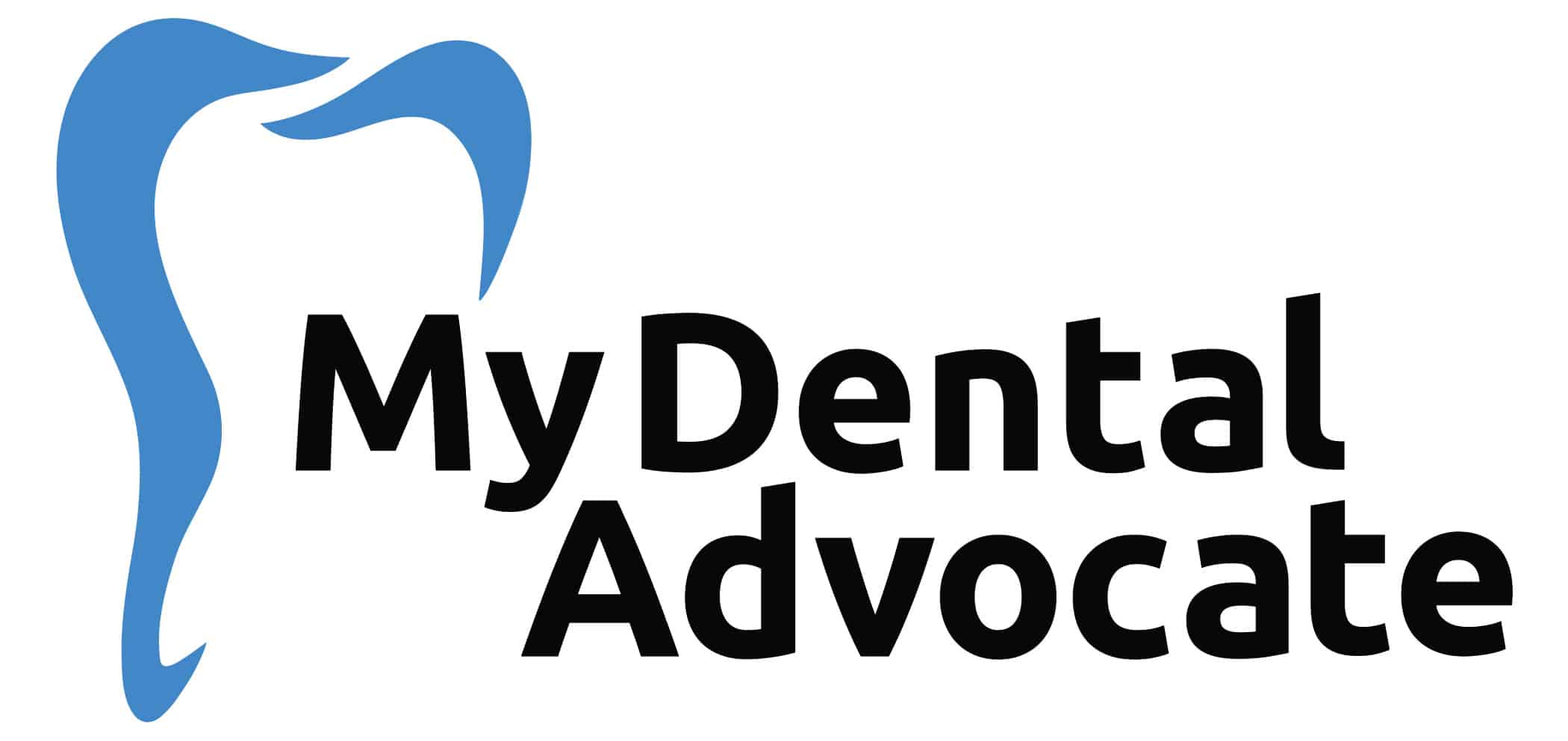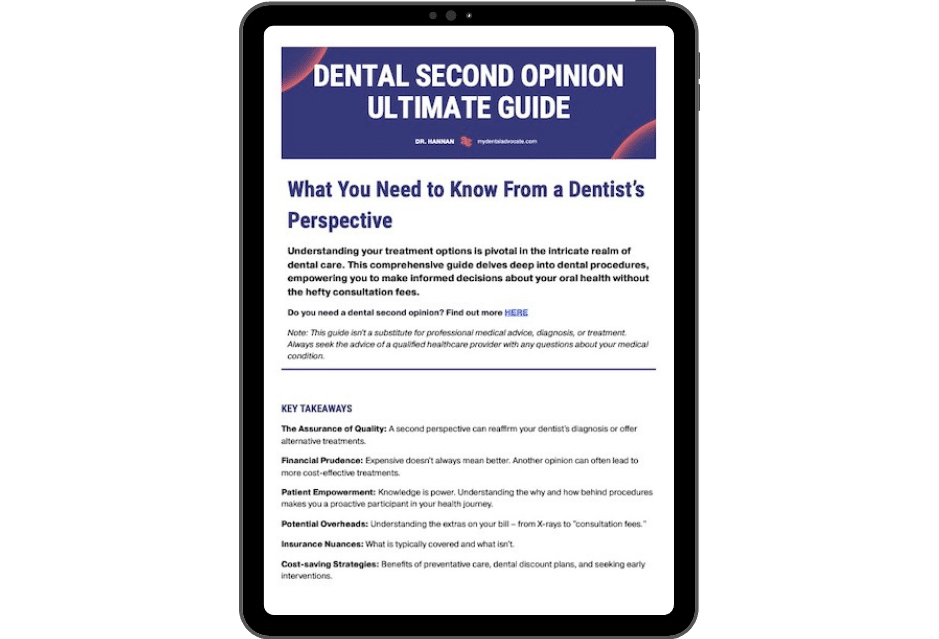Gingivitis | The Ultimate Guide (Content Hub)

Have you recently visited the dentist for a basic cleaning only to hear you have gingivitis?
You’re not alone; 94% of Americans have gingivitis.
If gingivitis is left untreated, it can progress into gum disease, also known as periodontal disease.
Related: Learn more about GingivitisNeed Dental Advice? Ask Dr. Hannan!
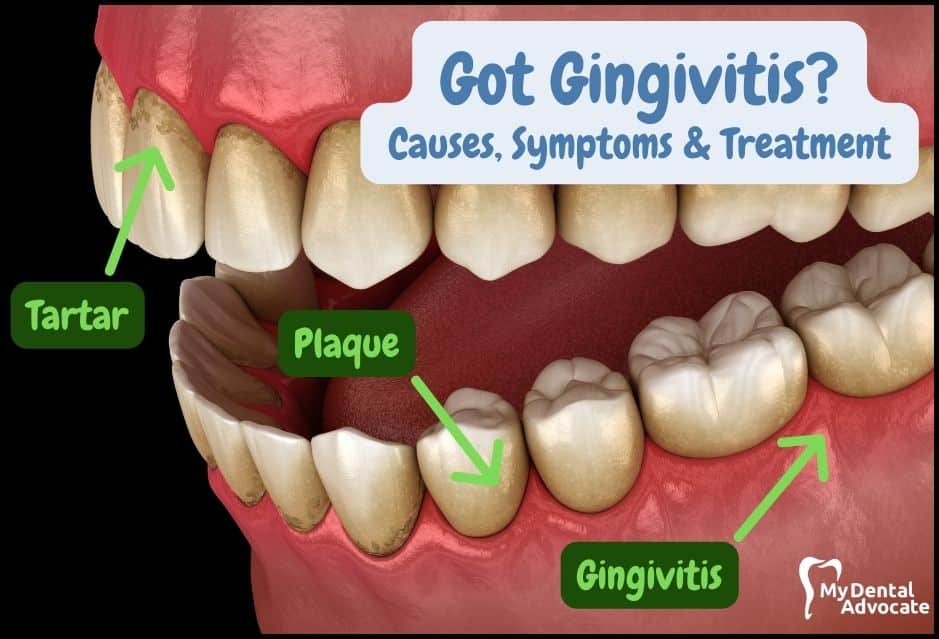
What Is Gingivitis? Causes, Symptoms & Treatment
Gingivitis is inflammation of the gums caused by harmful bacteria. If your dentist or hygienist does not remove harmful bacteria, the bacteria will congregate and multiply into advanced gum disease (periodontal disease).
The bacteria that infects the gums lead to swollen, red and puffy gums. Gingivitis is a common gum issue; however, oral hygiene improvements can help prevent this ailment.
According to the American Dental Association, gingivitis and periodontitis cause tooth loss in adults.
If you’re interested in learning more about the causes, symptoms and treatment of gingivitis, check out the link below.
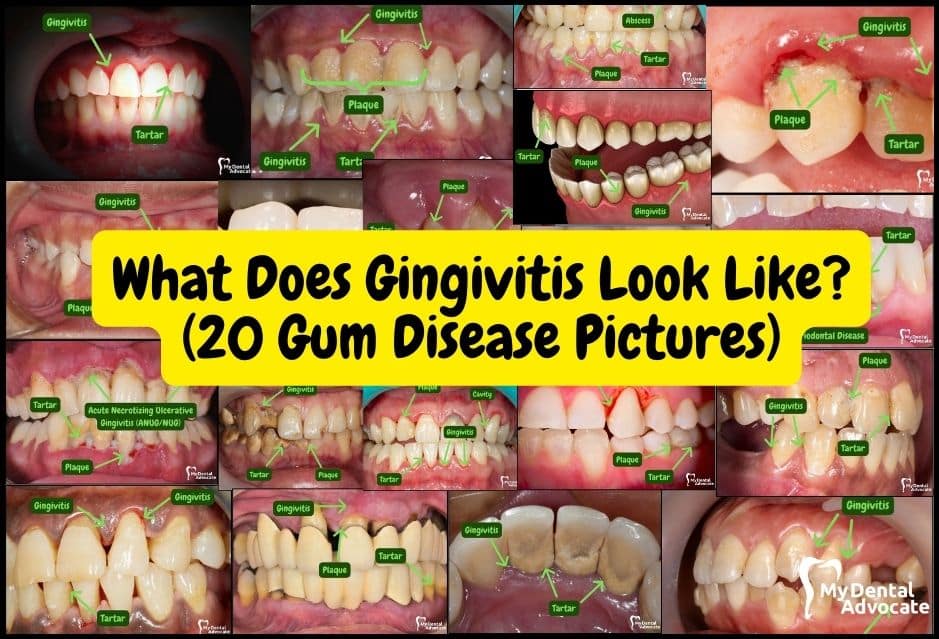
What Does Gingivitis Look Like? (20 Gum Disease Pictures)
It’s possible to have gingivitis without any symptoms. However, there may be no discomfort or noticeable symptoms in mild cases of gingivitis. Often, it remains undetected for quite some time.
The symptoms of gingivitis are somewhat non-specific. The pink-salmon coloring and stippling in the gum tissue will often disappear.
Also, the gums may appear shiny as the gum tissue becomes inflamed and stretched over the tissue surface.
If you are interested in learning more about what gingivitis and gum disease looks like, check out the link below.
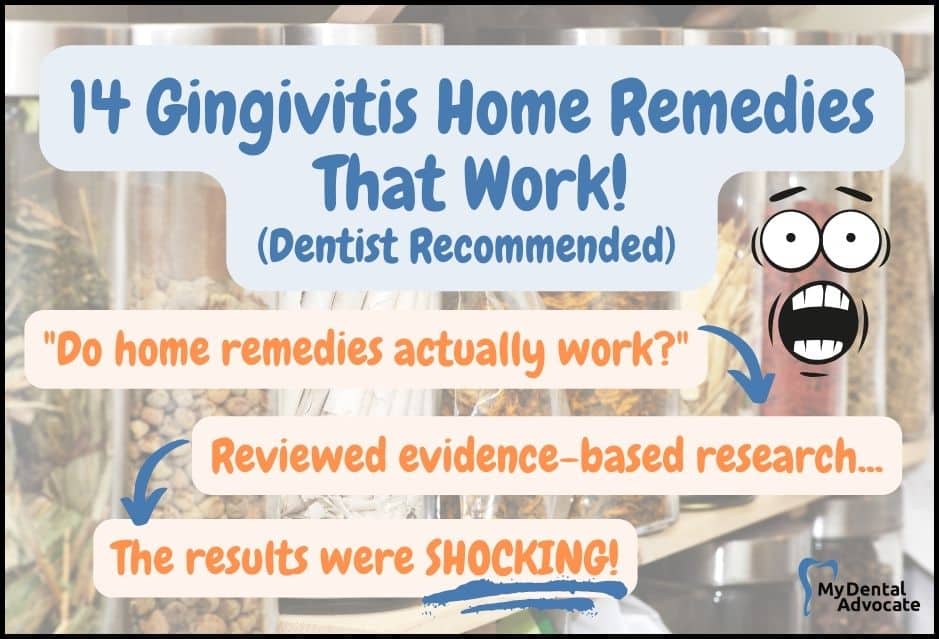
14 Gingivitis Home Remedies That Work! (Dentist Recommended)
Gingivitis requires professional treatment by a dentist or dental hygienist to remove harmful bacteria above and below the gums.
However, there are promising home remedies that will alleviate signs and symptoms of gingivitis.
So what does evidence-based scientific research say? First, let’s explore the proven benefits and home remedy treatments for gingivitis.
If you are interested in learning more about gingivitis home remedies that actually work, check out the link below.
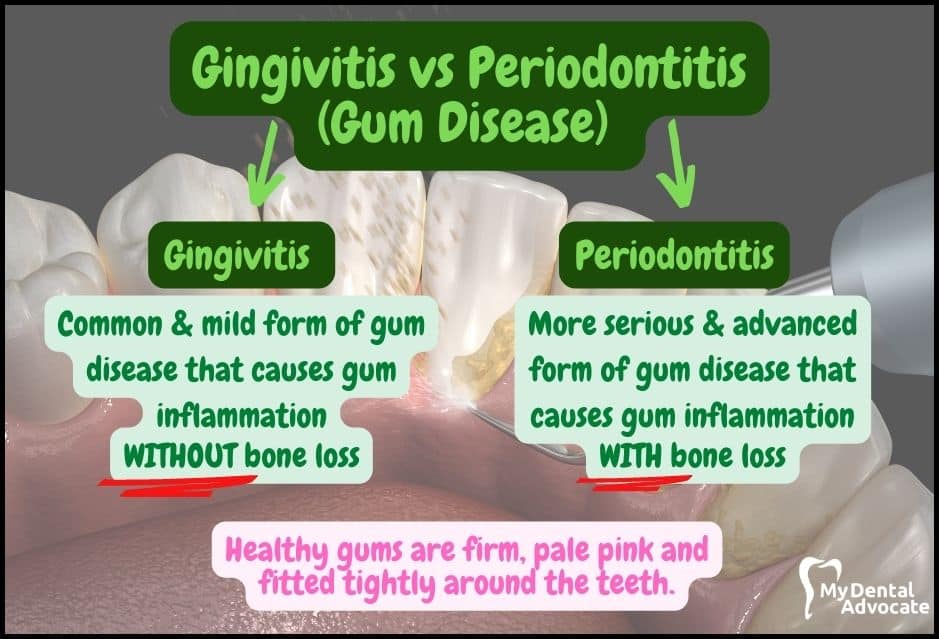
Gingivitis vs Periodontitis (Gum Disease) | Dentist’s Perspective
Gingivitis and periodontitis are severe dental diseases that wreak havoc on your oral health. Gingivitis consists of gum inflammation caused by harmful bacteria above and below the gum line.
In addition, gingivitis is reversible and requires routine dental cleanings and adjunctive services.
In contrast, periodontitis (gum disease) is irreversible and consists of gum inflammation with bone loss.
If you are interested in learning more about the difference between gingivitis and periodontitis, check out the link below.
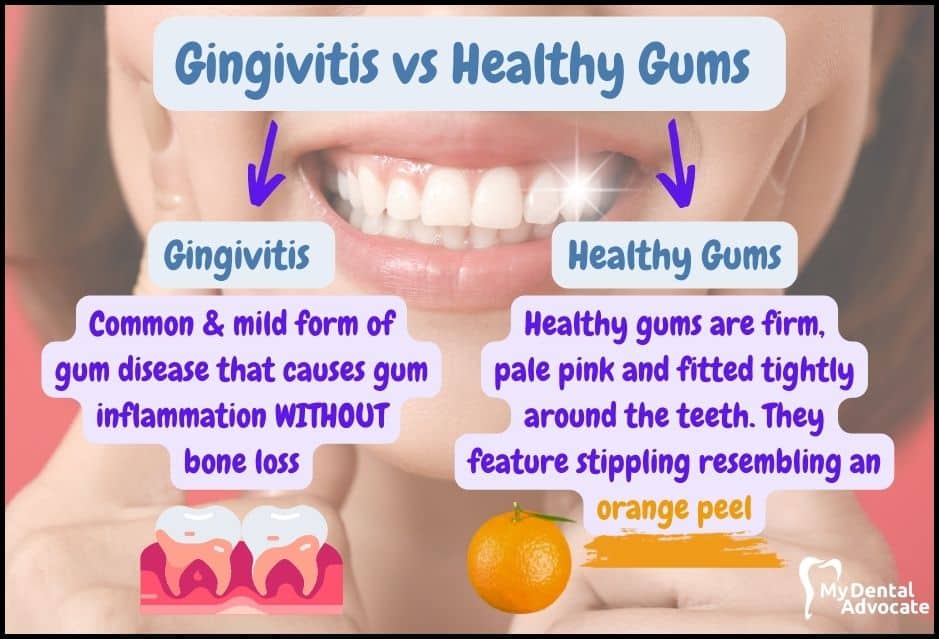
Gingivitis vs Healthy Gums (What’s the Difference?)
You may have gingivitis and not even know it! Harmful bacteria that cause gingivitis can progress into severe gum disease or creep into your bloodstream (yuck!).
Most patients with gingivitis or gum disease are unaware because they don’t have pain.
Understanding the differences between gingivitis and healthy gums will help you evaluate your oral and systemic health. Let’s take a closer look from a dentist’s perspective.
If you are interested in learning more about the difference between gingivitis and healthy gums, check out the link below.
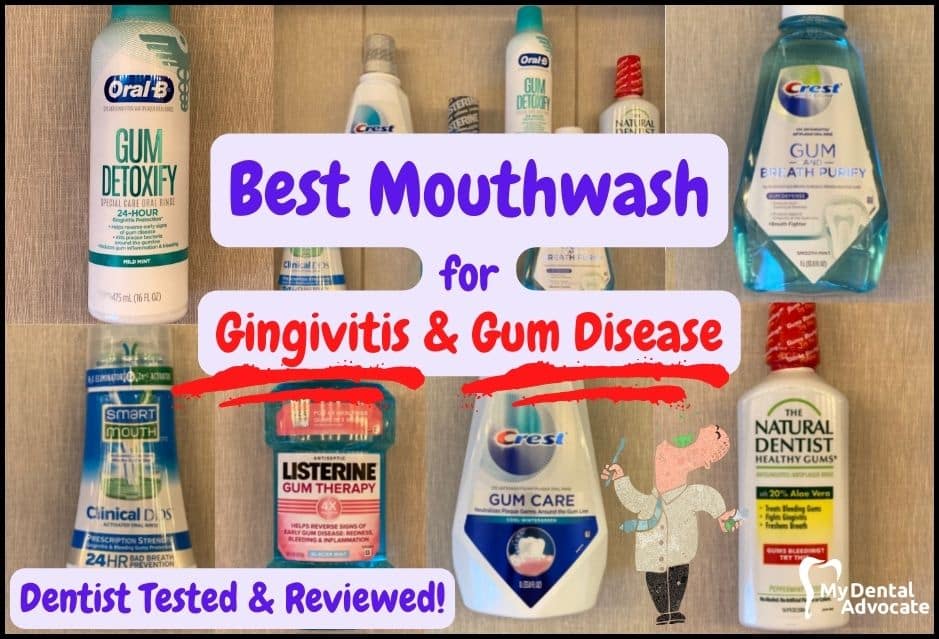
6 Best Mouthwashes for Gingivitis & Gum Disease 2024
The tested products contain several active ingredients to treat gingivitis and plaque accumulation. For example, The Natural Dentist Healthy Gums Oral Rinse contains aloe vera, and the Crest products contain cetylpyridinium chloride.
In addition, Listerine Gum Therapy Oral Rinse uses eucalyptol, menthol, thymol, and methyl salicylate.
Each product attacks the bacteria differently, leading to a unique taste, oral sensation, and lasting effects.
If you’re interested in learning more about the best mouthwash for gingivitis, check out the link below.
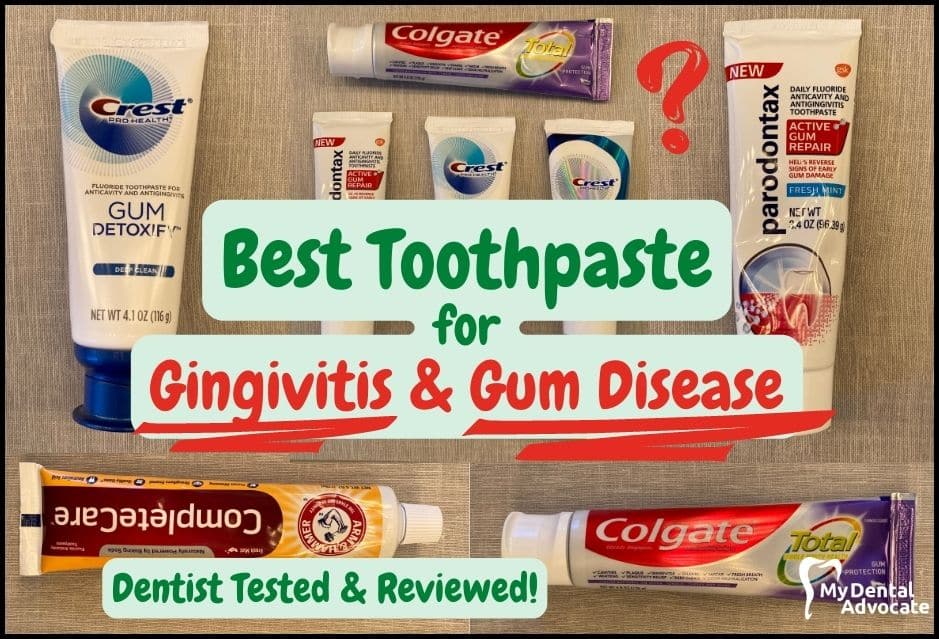
5 Best Toothpastes for Gingivitis & Gum Disease 2024
We highlight each product’s unique, advertised benefits, identify their pros and cons and score each one from 1 to 5 based on four categories. The toothpaste with the highest score is crowned the overall champion.
We’ll also give suggested patient benefits for each product. Prices listed are subject to change and discussed in each review.
However, they were not considered within the scoring criteria.
If you are interested in learning more about the best toothpaste for gingivitis, check out the link below.
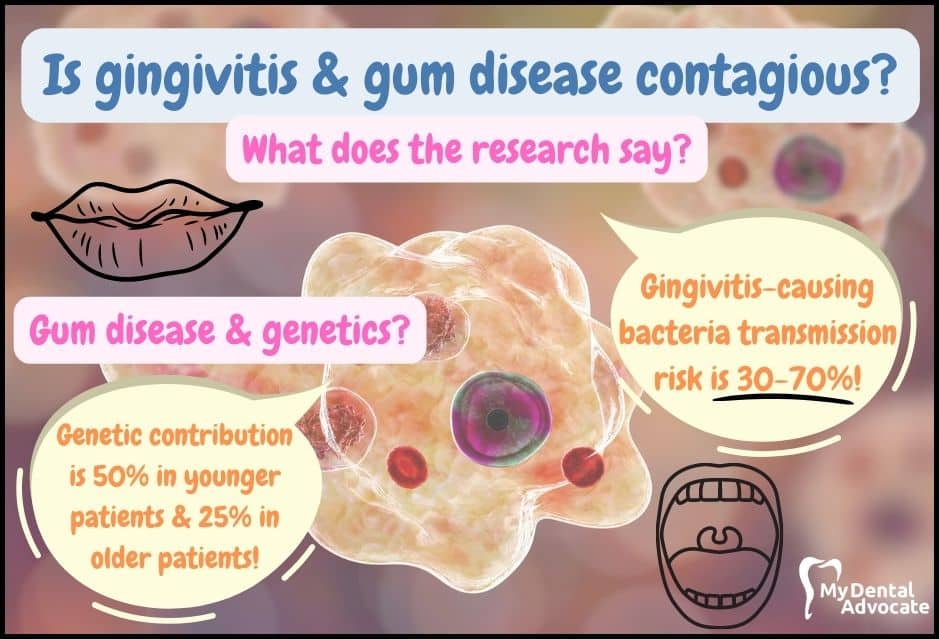
Is Gingivitis & Gum Disease Contagious? (What the Research Says)
According to a study by Canadian scientists, gingivitis-causing bacteria are transmissible 30-70% of the time.
The transmission rate depends on many factors, including the recipient’s immune response, frequency of exposure and oral hygiene.
However, just because the bacteria is transmitted does not mean gingivitis or gum disease will take form.
If you’re interested in learning more about gingivitis and gum disease transmission, check out the link below.
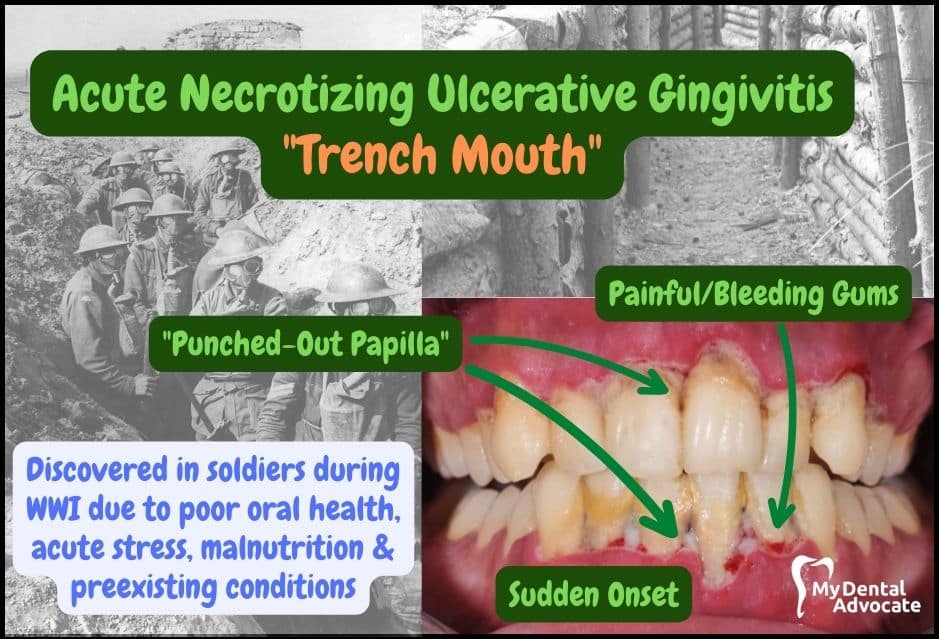
Acute Necrotizing Ulcerative Gingivitis (ANUG) “Trench Mouth”
Although I’ve never treated a patient with acute necrotizing ulcerative gingivitis (ANUG), I can only imagine the pungent odor that would be evident within the office walls.
As a dentist, I know the smell of periodontal disease. It’s a distinct odor that occurs when bacteria have localized deep below the gums and infect bone and gum tissue.
Unfortunately, many patients are unaware of this foul smell because of olfactory fatigue, which enables your body to adapt to prolonged exposure to smells.
If you are interested in learning more about trench mouth, check out the link below.
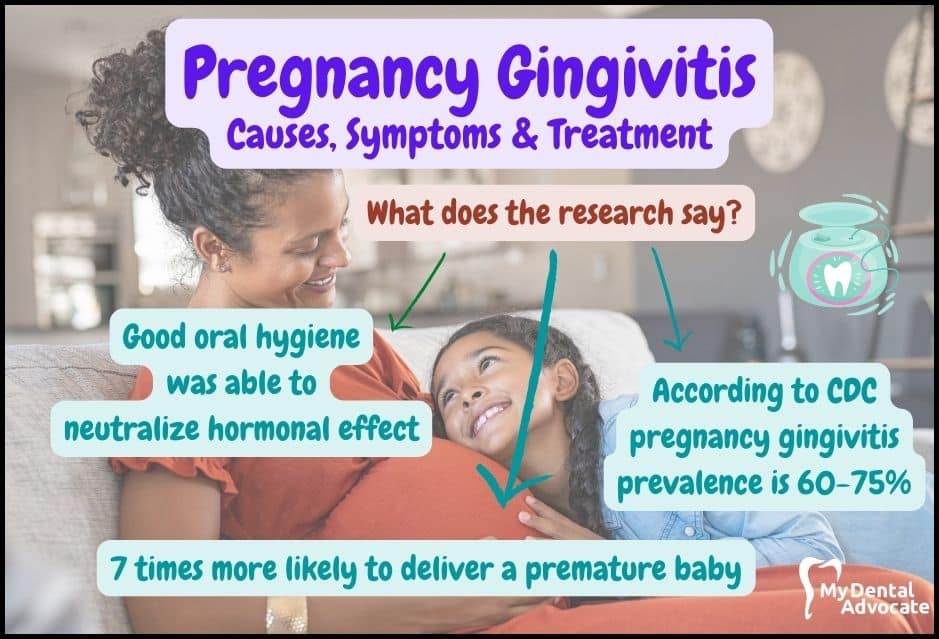
Pregnancy Gingivitis: Causes, Symptoms & Treatment
Pregnancy and the baby’s development inside a mother’s womb is a beautiful miracle; however, it doesn’t come without swollen legs, body aches and labor pains. In addition, hormones are in constant flux, preparing the mother for the baby’s arrival.
Progesterone and estrogen are two hormones that elevate, inducing many body changes.
Many believe these hormones cause pregnancy gingivitis and alter the body’s response to fight off gum disease-causing bacteria. So what does the research say?
If you are interested in learning more about pregnancy gingivitis, check out the link below.
My Experience & Expertise
This guide highlights all aspects of gingivitis, including causes, symptoms, treatment, and prevention.
We desire that this guide points you to the selected articles so you are fully informed the next time you visit the dentist.
Circle back to this content hub, home base. Good luck!
Need a second opinion? We can help! Learn more. Knowledge is power when cultivating healthy dental habits. The more informed you are, the better positioned you’ll be to prevent avoidable and potentially costly dental procedures for you and your family. Watch for future blog posts, where we’ll continue sharing important information, product reviews and practical advice!
Sources
- Li Y. Prevalence and severity of gingivitis in American adults. Am J Dentistry. 2010.
- Gingivitis and periodontitis: Overview Cologne, Germany: Institute for Quality and Efficiency in Health Care (IQWiG). 2020.
- Hasturk H. Efficacy of a fluoridated hydrogen peroxide-based mouthrinse for the treatment of gingivitis: a randomized clinical trial. J. Periodontol, 2004
- WebMD. Treatments for Gum Disease 2021.
- James P. Chlorhexidine mouthrinse as an adjunctive treatment for gingival health Cochrane Database, 2017
- Pejcic A. The effects of low-level laser irradiation on gingival inflammation Photomed Laser Surg, 2010.
- Parkinson CR. Gingivitis efficacy of a 0.454% w/w stannous fluoride dentifrice: a 24-week randomized controlled trial BMC Oral Health, 2020.
- AAPD Treatment of Plaque-Induced Gingivitis, Chronic Periodontitis, and Other Clinical Conditions Journal of Periodontology, 2004.
- Stoeken J. The Long-Term Effect of a Mouthrinse Containing Essential Oils on Dental Plaque and Gingivitis: A Systematic Review Journal of Periodontology, 2007.

About the Author
Dr. Matthew Hannan, also known as “Dr. Advocate,” is a board-certified dentist on a mission to provide accurate dental patient education. He attended Baylor University before completing dental school at UT Health San Antonio School of Dentistry. He now lives in Arizona with his beautiful wife and 4 kids. Dr. Hannan believes everyone should access easy-to-read dental resources with relevant, up-to-date dental research and insight to improve their oral health.

Connect with Dr. Hannan!

Best Dental Advice (Dentist Perspective) | Part 1
According to a recent study, Only 25.8% of children reported a high oral health knowledge. Yet, we have many resources to learn about healthy dental habits, revolutionary dental products, and preferred dental treatments…
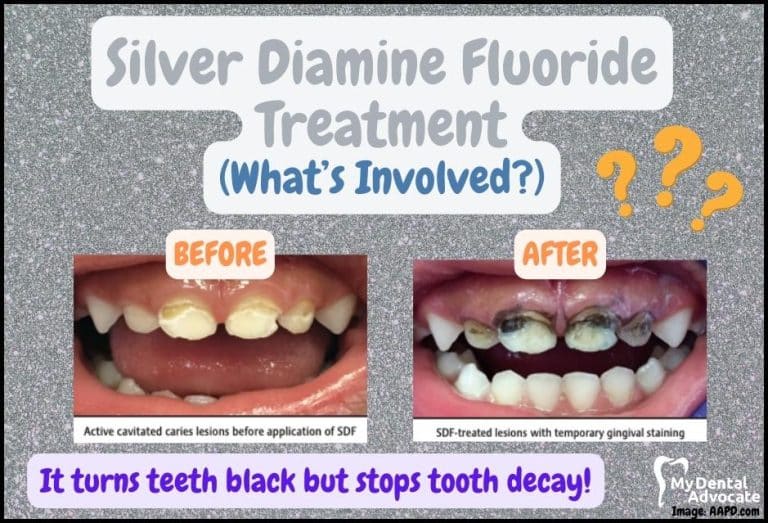
Silver Diamine Fluoride Treatment (What’s Involved?)
According to the CDC, cavities are one of the greatest unmet dental needs. Did you know half of all children have had or will have a cavity? Unfortunately, filling a cavity is a process that requires time out of your schedule and is costly. Silver diamine fluoride treatment can arrest…
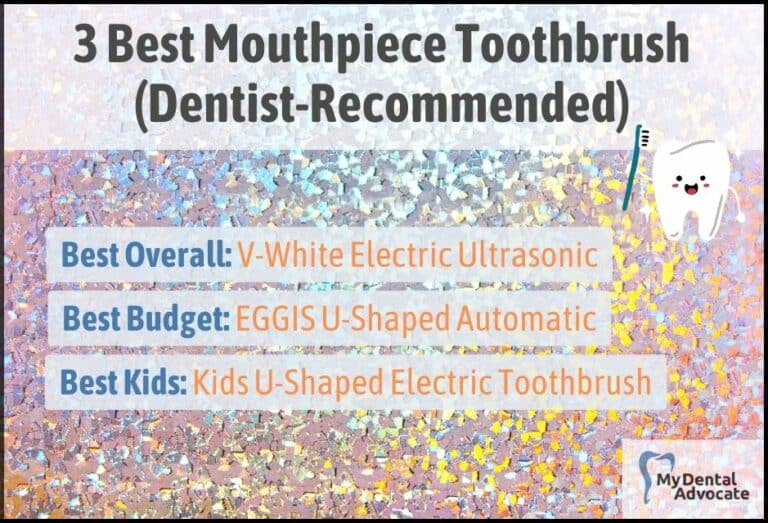
3 Best Mouthpiece Toothbrush 2024 (Dentist-Recommended)
Welcome to the cutting edge of oral hygiene, where innovation meets practicality in the form of a mouthpiece toothbrush. Gone are the days of manual brushing, where each tooth fights for its fair share of attention. In its place, a new dawn of dental care emerges: the mouthpiece toothbrush, designed for absolute coverage and unmatched convenience.
Gain Clarity with Our FREE Second Opinion Guide
Receive clear, expert second opinions online within 48 hours. Start today!
Product Reviews
Our 250+ dental product reviews (and counting), curated by an experienced dentist, are the most comprehensive online.
Toothbrush Genie
State-of-the-art chatbot designed to help you discover your perfect toothbrush in just a few simple steps!
Cavity Risk Assessment
Cutting-edge digital tool designed to evaluate your individual cavity risk based on your responses to a series of questions.
Gum Disease Assessment
Discover your gum disease risk with our quick and engaging 6-question assessment!
